Your dining room is small? Cute. Mine is basically a glorified hallway with a table. But here’s the truth: compact spaces can look ridiculously stylish and function beautifully—if you play your cards right. These 9 tiny dining room ideas will help you squeeze every inch of style (and seating) out of your space without making it feel cramped. Let’s make your small-but-mighty dining nook the star of the house.
1. Choose the Right Table Shape (It Matters More Than You Think)
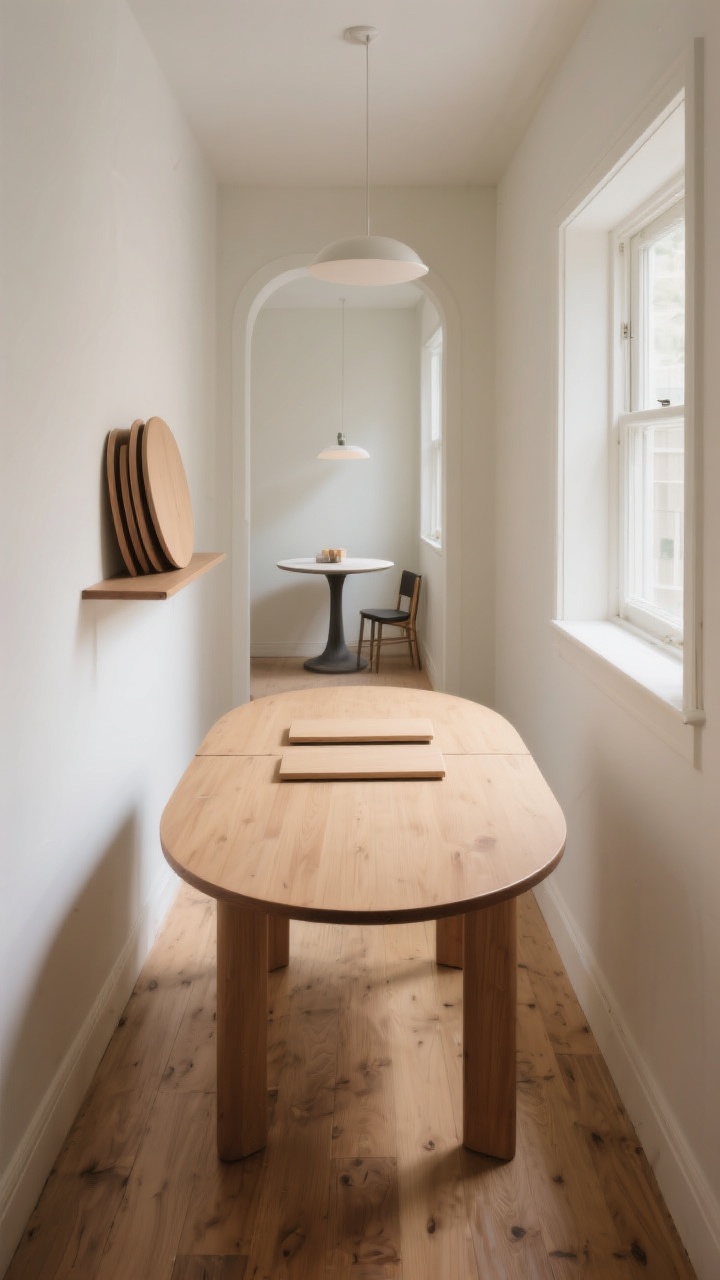
Table shape is everything in a tiny room. Round and oval tables are MVPs because there are no sharp corners stealing space or bruising knees. They also make it easier to squeeze in an extra chair when needed.
Smart Shapes for Small Spaces
- Round Pedestal Table: No clunky legs in the way. More room for chairs and feet.
- Oval Extension Table: Everyday oval, extra leaves for guests—best of both worlds.
- Square Bistro Table: Tight corners? A small square table tucked against the wall is a win.
FYI: Match the table to the room’s footprint. Long, narrow room? Go oval or a slim rectangular table with rounded edges so it doesn’t feel boxy.
2. Build Seating That Multitasks (Benches, Banquettes, and More)
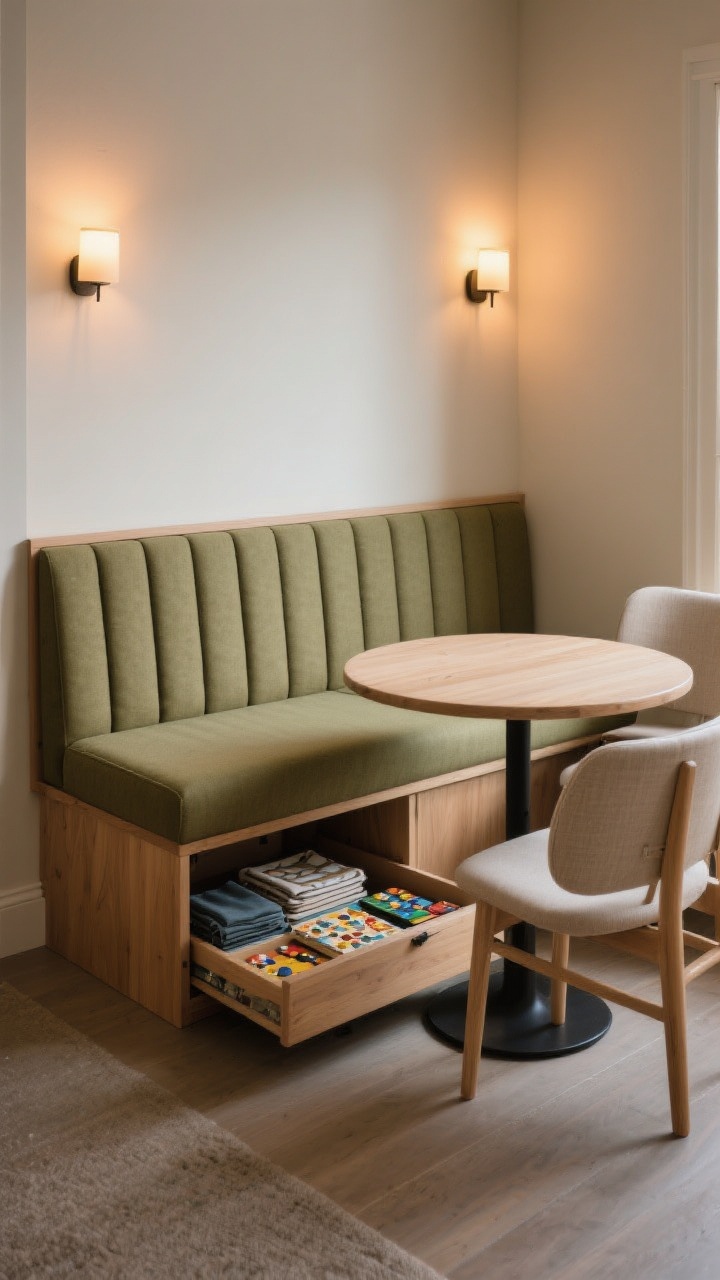
Chairs are cute, but they’re not always efficient. Swap a couple of them for a bench or, even better, a built-in banquette that hugs the wall. You’ll fit more people comfortably without crowding the walkway.
Seating That Saves Space
- Storage Banquette: Hidden drawers or lift-up seats are a clutter-busting dream.
- Backless Bench: Slides under the table when not in use—so tidy.
- Slim Armless Chairs: Lightweight and easy to scoot; look for low backs to keep sightlines open.
Pro move: Upholster the banquette in a performance fabric so spaghetti nights don’t become horror stories.
3. Let Lighting Do the Heavy Lifting (Visually and Literally)
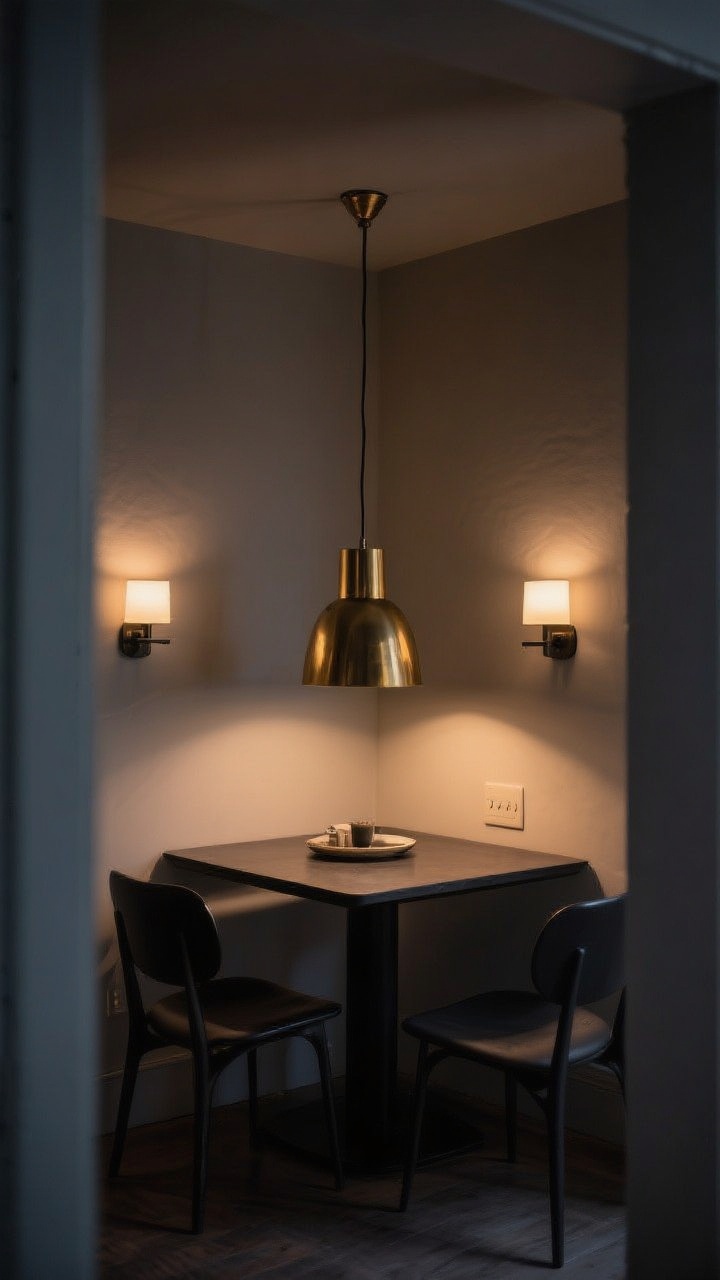
Lighting sets the vibe—and in a small room, it also defines the dining zone. A pendant or chandelier centered over the table gives structure and makes everything feel intentional.
Lighting Rules That Never Fail
- Scale It Right: Aim for a fixture about one-half to two-thirds the table’s width.
- Hang Height: Typically 30–34 inches above the tabletop keeps it cozy, not blinding.
- Dimmer Switch: Non-negotiable. Bright for homework, low for dinner party flex.
Bonus: Add wall sconces if you’re low on floor space. They bring mood without stealing square footage.
4. Use Mirrors and Vertical Lines to Fake Square Footage
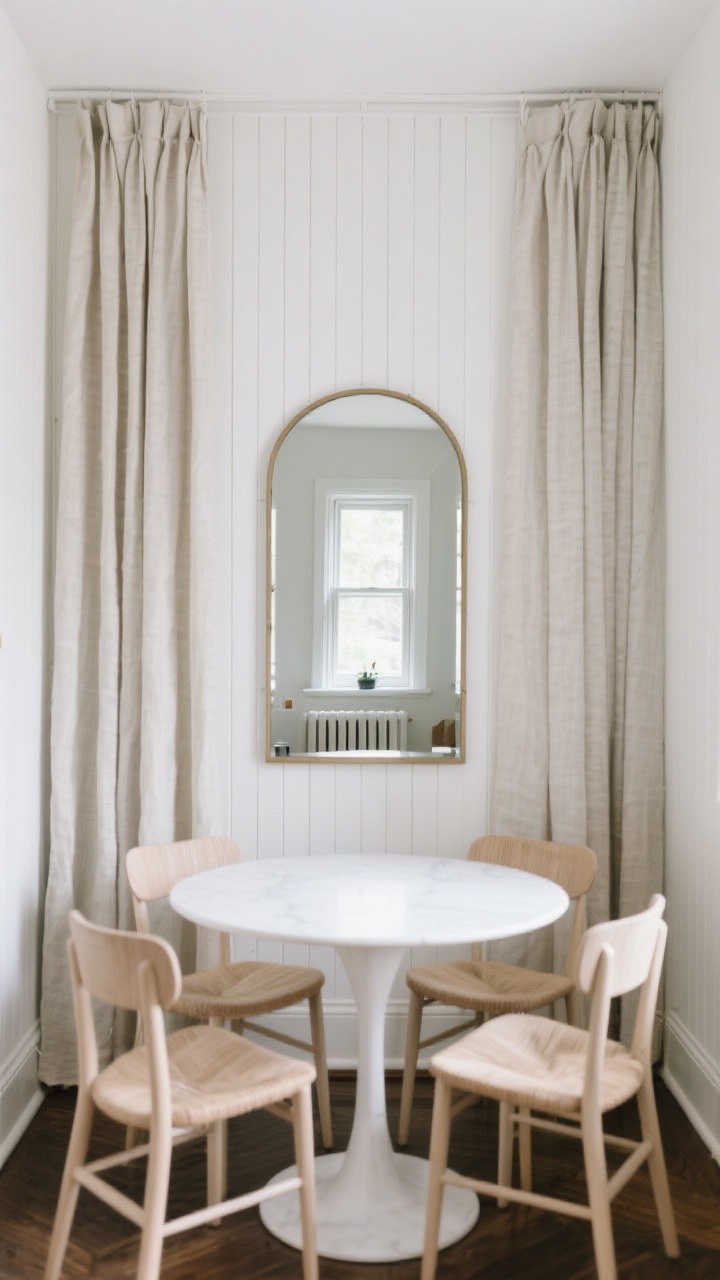
Want instant visual space? Mirrors. A large mirror opposite a window doubles the light and makes the room feel airy. Not a mirror person? Vertical elements will do the trick too.
Stretch the Room with These Tricks
- Big Mirror, Simple Frame: Lean it or mount it—either way, watch the room “expand.”
- Vertical Paneling: Beadboard, shiplap, or wallpaper stripes = optical lift.
- Floor-to-Ceiling Curtains: Even if the window is tiny, hang high and wide to elongate the walls.
IMO, one large mirror beats a collage in a small dining room. Less visual clutter, more chic.
5. Go Bold on the Walls (Yes, Even in a Tiny Room)
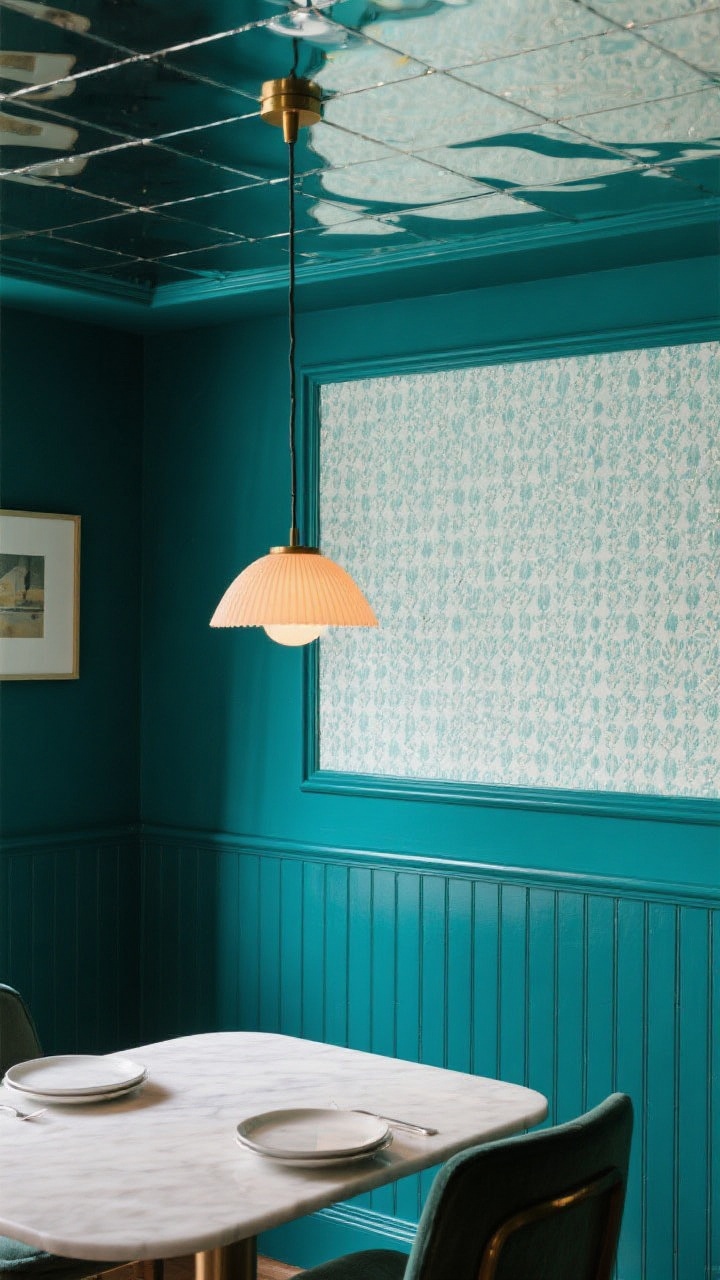
Small doesn’t mean boring. A statement wall or rich paint color can make your small dining room feel intentional and high-end. Think of it like a jewel box—compact, but packed with personality.
Color and Pattern That Works
- Saturated Paint: Deep teal, olive, or charcoal adds drama without closing the room in.
- Patterned Wallpaper: Try a small-scale print or a subtle mural to add depth.
- Two-Tone Trick: Paint the lower half darker and upper half lighter to balance coziness and height.
Keep the ceiling light and reflective to bounce light around. Or go full cocoon with a dark ceiling if you like moody vibes—just add excellent lighting.
6. Choose Furniture With Legs and Glass (A.K.A. The Airy Edit)
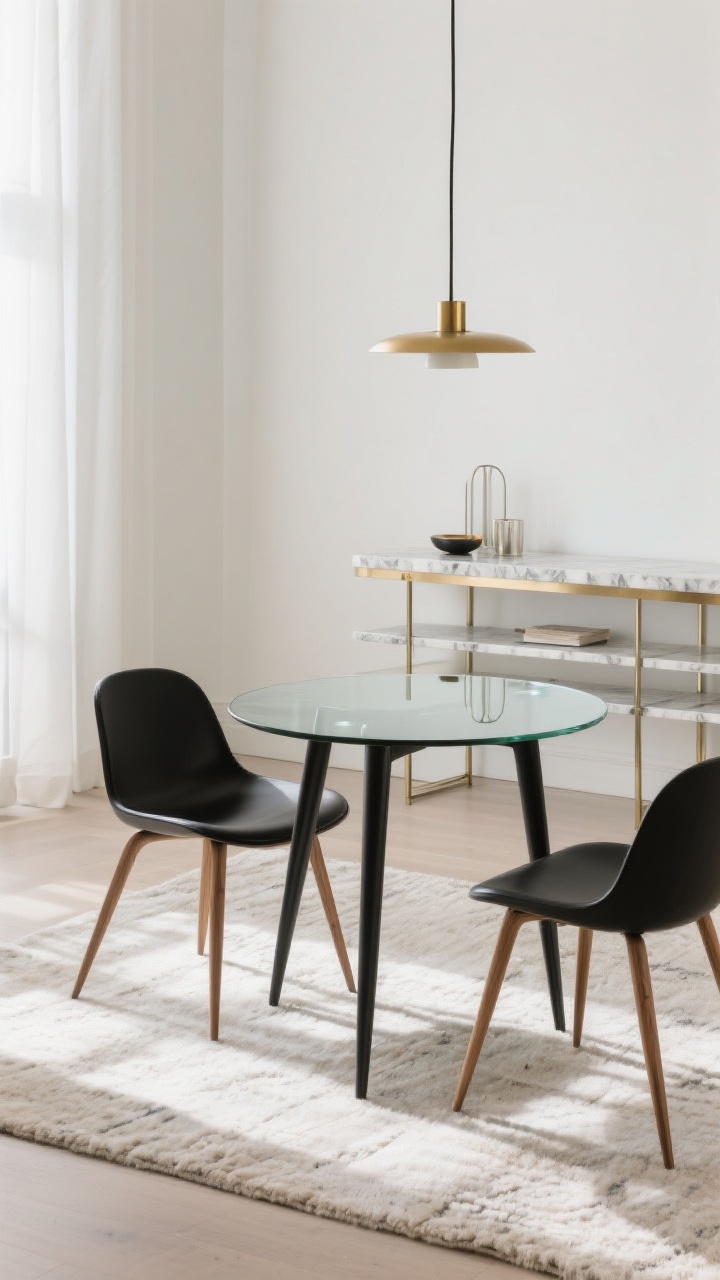
Heavy, boxy furniture visually crowds a small room. Instead, pick pieces with slim profiles, visible legs, and reflective surfaces so the eye can “see through” the space.
What to Look For
- Leggy Chairs: Tapered wood or metal legs feel light and modern.
- Glass or Stone Tops: Glass practically disappears; a slim marble top adds luxe without bulk.
- Open-Base Storage: A narrow console with open shelving beats a chunky sideboard.
And keep finishes consistent—matching metal tones (brass, black, chrome) help everything feel curated, not chaotic.
7. Style a Table You Don’t Have to Clear Daily
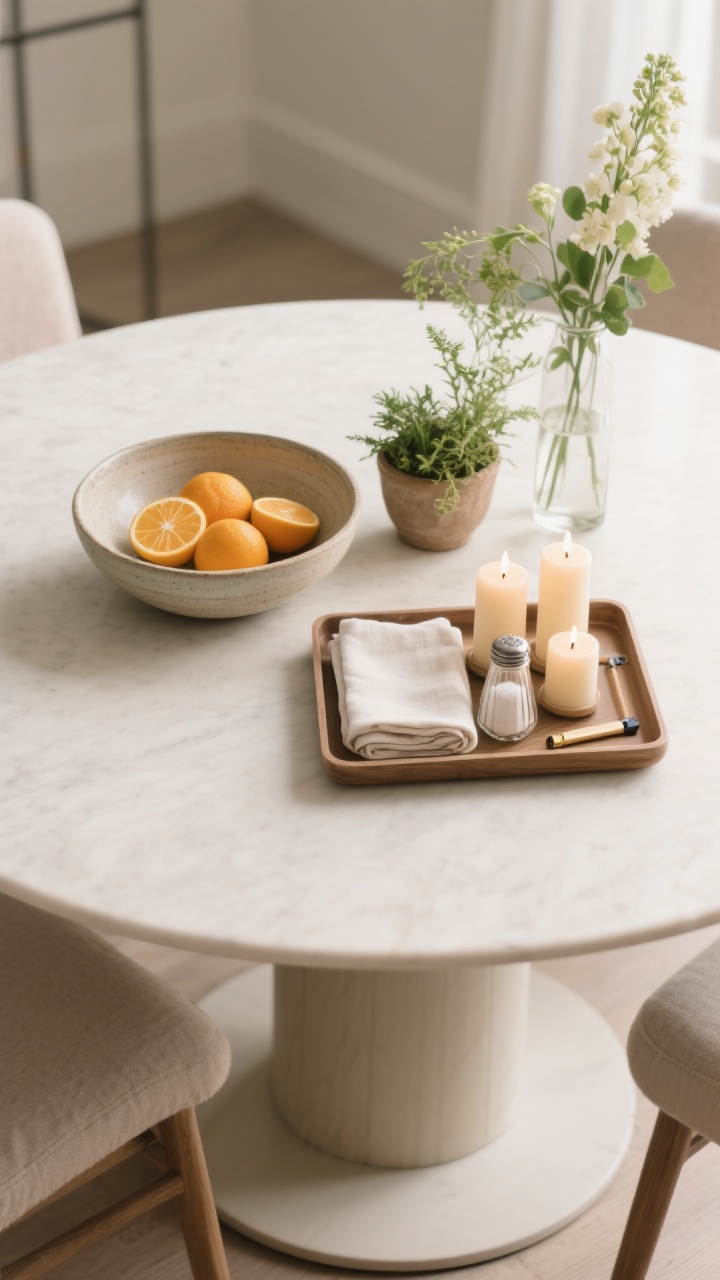
There’s an art to styling a small dining table so it looks finished but still functional. The trick? Keep it low, simple, and easy to move.
Centerpiece Rules for Real Life
- Low Arrangement: A compact bowl, planter, or cluster of votives—no towering florals blocking faces.
- Odd Numbers: Three small items grouped together look balanced and chic.
- Tray It: Corral salt, pepper, napkins, and a candle on a tray—lift and go when dinner hits.
For tight setups, consider a lazy Susan—useful and charming. Plus, nobody has to play condiment Tetris.
8. Max the Floor Plan With Rugs and Clear Pathways
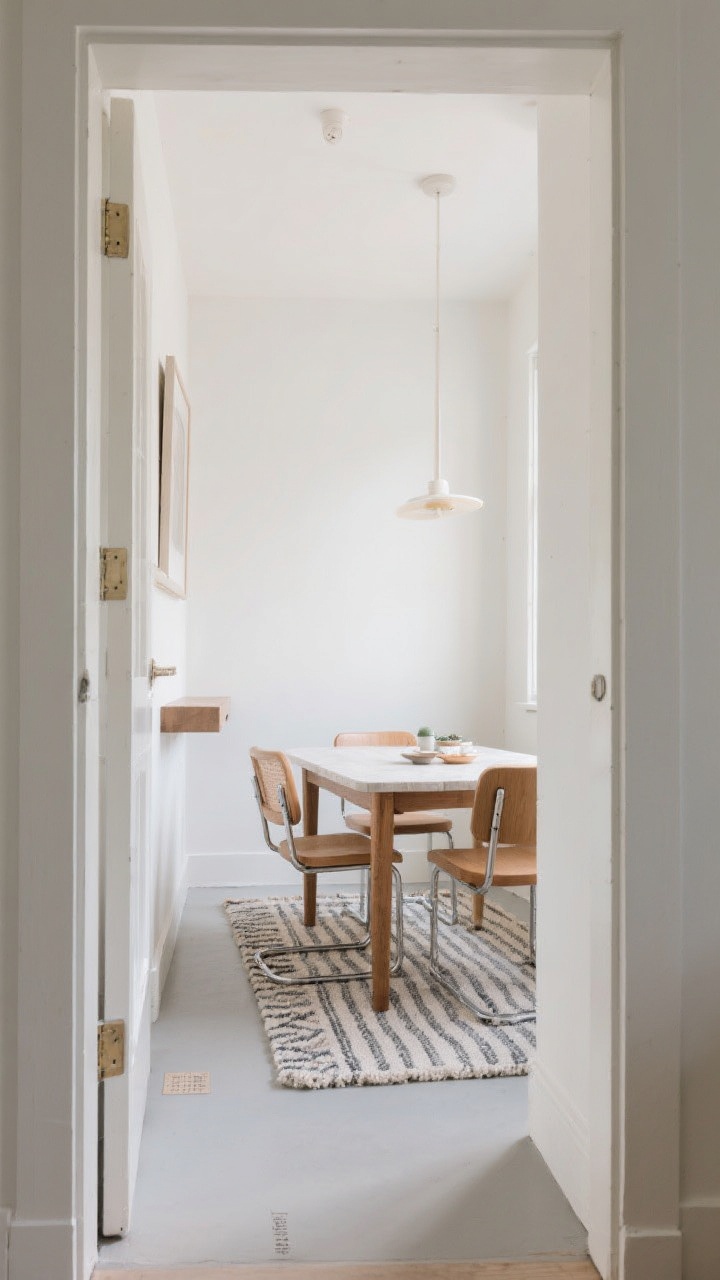
A rug can anchor your dining area and make it feel bigger—if you choose the right size. Too small, and it looks like a postage stamp. Too big, and it smothers the room.
Rug Cheat Sheet
- Size: Rug should extend 24 inches beyond the table on all sides so chairs slide easily.
- Material: Flatweave or indoor-outdoor rugs stand up to crumbs and spills.
- Pattern: Subtle geometric or tonal stripes add depth without overwhelming.
Make sure there’s a clear path around the table—ideally 30–36 inches from table edge to wall or furniture. Your shins will thank you.
9. Hide Storage in Plain Sight (Clutter Is the Real Space Killer)
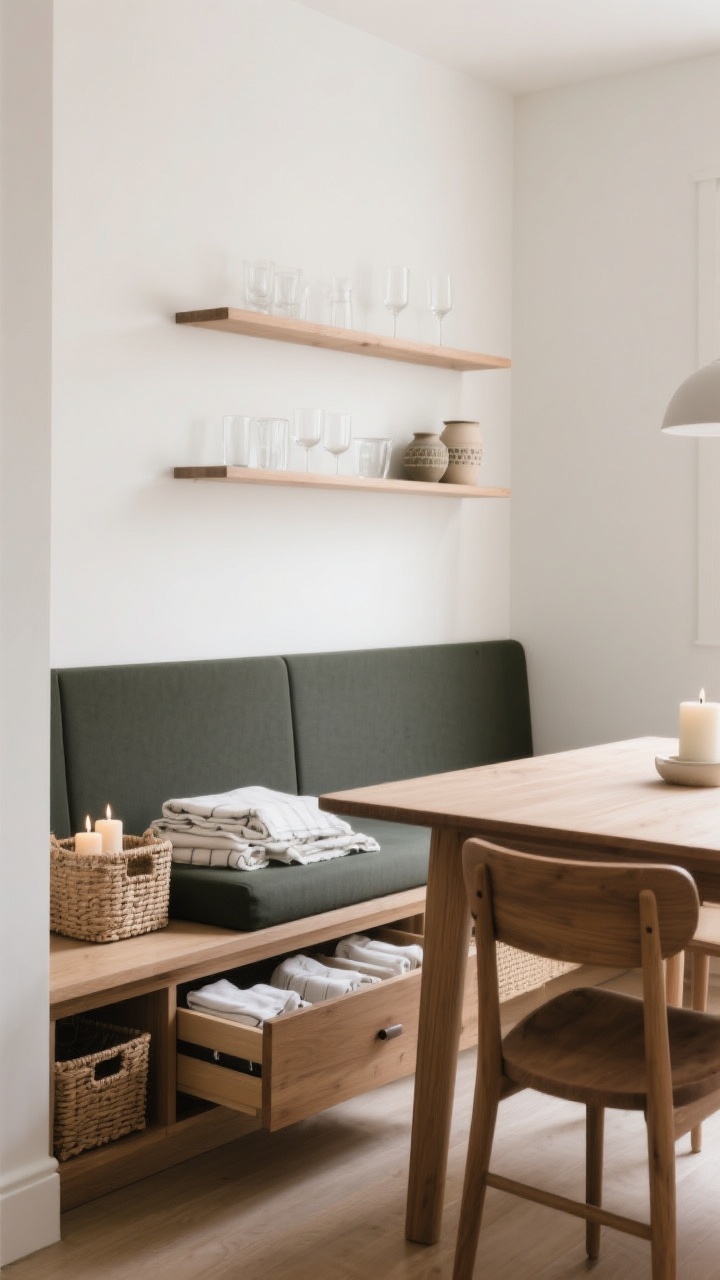
Let’s be honest: tiny dining rooms collect stuff. Linens, candles, random mail… you get it. Build in storage so everything has a home and your table stays photo-ready.
Storage That Disappears
- Drawer Banquette: Stash placemats, seasonal decor, and board games out of sight.
- Slim Console: Look for 10–14 inches deep; add baskets for napkins and table linens.
- Floating Shelves: Style with pretty glasses and a few ceramics—functional and decorative.
Keep your color palette tight—think two neutrals and one accent. When everything coordinates, the room feels bigger and more intentional. Less visual noise, more calm.
Quick Styling Checklist
- Edit chairs to 4–6 max, depending on table size.
- Add one hero light fixture and put it on a dimmer.
- Use one large art piece or mirror, not five small frames.
- Keep traffic flow clear and chairs easy to pull out.
- Layer textures—wood, metal, linen—for that designer finish.
You don’t need a giant dining room to host like a pro. With the right shapes, smart storage, and a few bold choices, your tiny dining spot can feel luxe, cozy, and ready for everything from Tuesday takeout to holiday toasts. Now go light the candles and text the group chat—you’ve got this.
